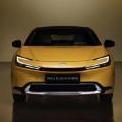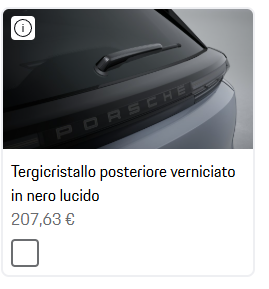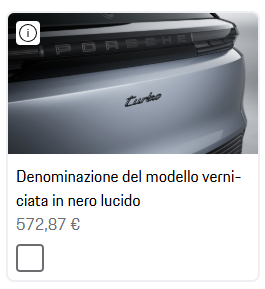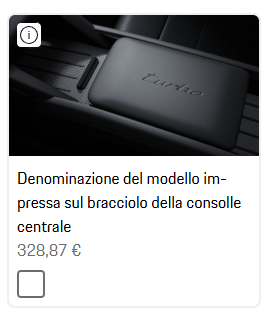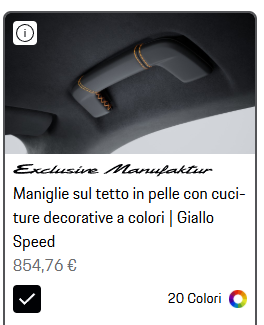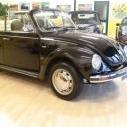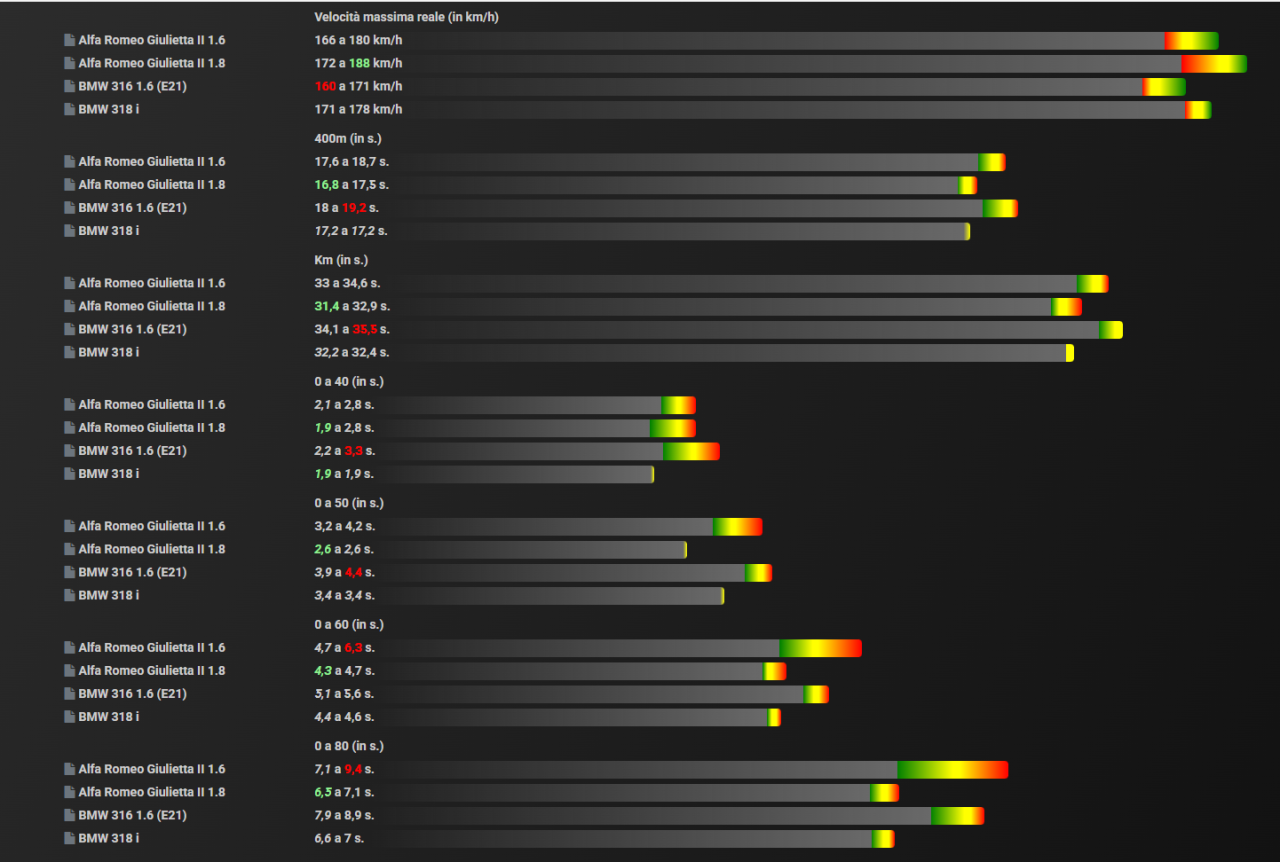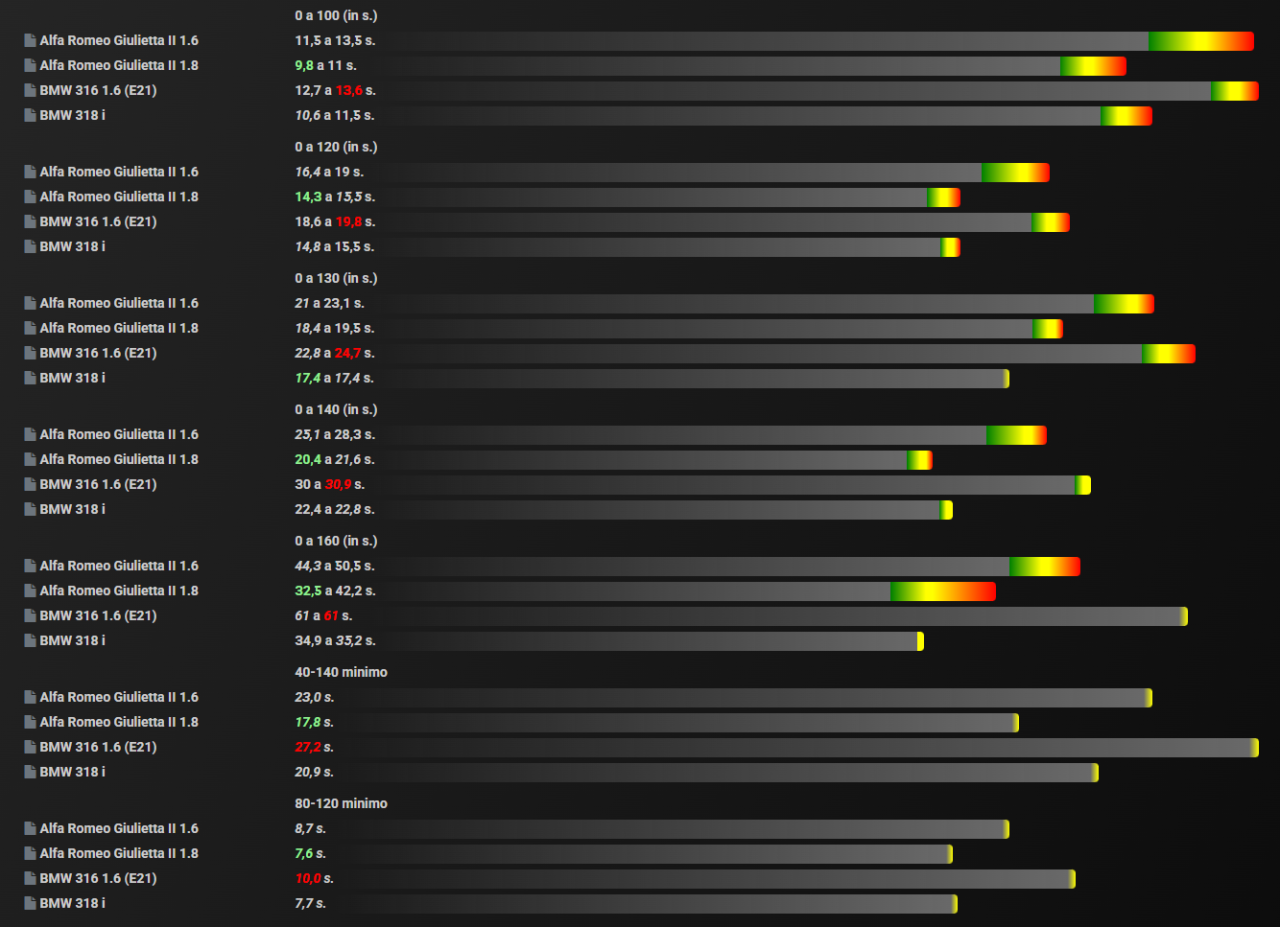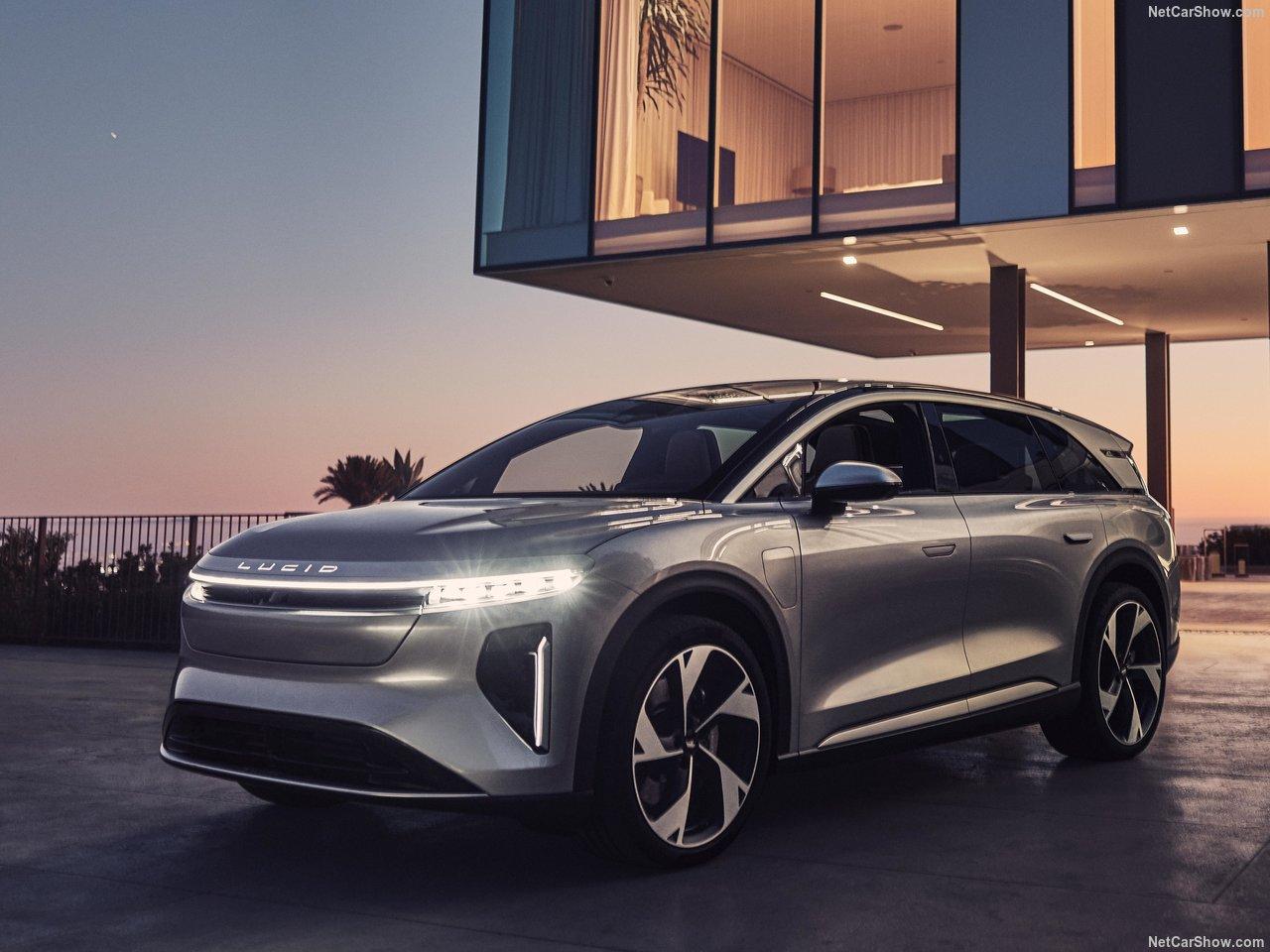Tutte le attività
Questo flusso si aggiorna automaticamente
- Ultima ora
-
Guida sportiva e BEV
Che sia in guida sportiva che paciosa, la Bev ha una caratteristica fondamentale che s'impone, la coppia istantanea e fluida, solida e potente che senti sotto al piede quando acceleri poco o molto, non importa. Parlando da ingegnere meccanico e dal piede sensibile, la sensazione di fluida e potente leggerezza che dà, so che è impossibile da avere da un accrocchio meccannico complesso come un powertrain ICE + cambio. In guida veloce con la Model 3 invece il peso mi dava ansia, ma non è una caratteristica ineluttabile, anche certe Ice sono pesantissime, ma in effetti quasi tutte le bev lo sono. Date tempo alle batterie di alzare la loro densità gravimetrica, e non ce n'è per nessuno (Ice).
-
Porsche Cayenne Electric 2026
- Tecnologie per la sostenibilità ambientale e geopolitica dell'Elettrificazione
Non so esattamente di cosa parli. Le sole 2 opzioni sono andare in EV o Hybrid. Al massimo con phev Toyota vai in Auto EV/HV che è una modalità che alterna EV a bassa velocità e HV ad alta, spandendo la carica sul tragitto impostato. Ma quando hai finito la carica è solo ibrido, sebbene con una batteria tampone enorme rispetto a un ibrido non plugin quindi non proprio uguale.- Jeep Recon 2026
- Jeep Recon 2026
- Oggi
- Mercedes-Benz g-Class 2025 (Spy)
Comunque effettivamente sta roba della "g" minuscola non è proprio leggibilissima al volo- Scelte strategiche DR Automobiles Groupe
E non puoi dirci nulla? 👀- Scelte strategiche DR Automobiles Groupe
So cosa vogliono fare di osca, ma di itala proprio no…- Lancia: filosofia sulla storia, sul brand, sui modelli e sullo sviluppo
- Porsche Cayenne Electric 2026
- Tecnologie per la sostenibilità ambientale e geopolitica dell'Elettrificazione
- [Mai Nate] Lancia
- Fiat -> FCA -> Stellantis - Filosofia su una holding multinazionale
- Scelte strategiche DR Automobiles Groupe
MI pare altri circa 50 miliardi dallo stato, sempre briciole sono... importante che siano spesi bene, purtroppo abbiamo dei pessimi esempi nel passato in operazioni di questo tipo.- Scelte strategiche DR Automobiles Groupe
bisogna vedere in che misura lo stato abbia finanziato.- Avvistamenti vari di auto storiche o quasi-storiche
Bellissima questa, è una 2CV4 (riconoscibile dai fari quadrati), probabilmente delle prime importate dopo la reintroduzione nel listino italiano avvenuta nel 1976. Bella anche la 205 parcheggiata come un'auto qualsiasi moderna, ormai una visione rarissima nelle grandi città.- Alfa Romeo - filosofia sul brand, sui modelli e sullo sviluppo
Confronto tra Giulietta 116 1.6/1.8 vs BMW E21 Notare come la Giulietta 1.8, a parte la vel max, vada più o meno come il 318i di 15 anni dopo, come si evince dai numeri sopra.- Novità Batterie Stato Solido e Semi-solido
GAC GROUP China has completed its first large-capacity all-solid-state battery production line, according to Chinese state media. The facility, built by GAC Group, is currently producing 60 Ah+ vehicle-grade cells on a small-batch test basis. These cells are projected to allow electric vehicles with current 500 km ranges to exceed 1,000 km once integrated. Mass production is planned for 2027-2030. The term “60 Ah+” refers to the capacity of each battery cell in ampere-hours (Ah). A 60 Ah cell can theoretically supply 60 amperes for 1 hour before discharging completely. Higher Ah per cell generally means more energy storage, which can translate into a longer driving range when multiple cells are assembled into a battery pack. All-solid-state batteries use solid electrolytes instead of liquid ones, which improves thermal stability and safety. GAC’s production line reportedly achieves an areal capacity of up to 7.7 mAh/cm², compared with less than five mAh/cm² in traditional “wet” lithium-ion manufacturing. GAC’s research director, Qi Hongzhong, said the energy density of the new solid-state cells is nearly double that of conventional batteries. Vehicles currently capable of 500 km (~310 miles) on a single charge could potentially reach more than 1,000 km (~620 miles) with these cells. The company is using a “dry” anode production process that combines slurry mixing, coating, and rolling into a single step. This technique reportedly improves manufacturing efficiency and reduces energy consumption. The solid electrolyte can tolerate higher temperatures than liquid electrolytes, reportedly withstanding 300–400 °C compared with approximately 200 °C for conventional batteries. Small-batch vehicle integration tests are planned for 2026, with a gradual ramp-up to mass production between 2027 and 2030. While the milestone represents a significant technical achievement, commercialisation will depend on investment, reliable supply of solid electrolyte materials, and validation of long-term performance and safety in vehicles. CarNewsChina.comChina’s first large‑capacity (60 Ah+ class) all-solid-sta...Chinese state media reports GAC has completed China’s first 60 Ah+ all-solid-state battery line with mass production by 2030. SAIC Motor SAIC Motor said its partner Qingtao Power’s all-solid-state battery production line in Anting has achieved full-line commissioning, and the firm expects sample cells to roll off the line by the end of this year, with prototype vehicles to undergo testing next year and commercial mass-delivery scheduled for 2027, as reported by IT-home. SAIC has previously described technical targets for the new solid-state chemistry: a gravimetric energy density above 400 Wh/kg, a volumetric energy density above 820 Wh/L, and single-cell capacities greater than 75 Ah. Those figures were disclosed in earlier corporate communications and press briefings and have been repeated in trade outlets and SAIC’s technology summaries. The company also provided safety performance data for the chemistry, reporting that cells passed nail-penetration tests and sustained exposure in a 200°C thermal chamber without catching fire or exploding, and that low-temperature capacity retention exceeds 90 per cent. SAIC’s published materials present these results as laboratory and validation data linked to its stated development roadmap. SAIC’s engagement with solid-state development dates back several years and includes collaborative investment with Qingtao Energy; reporting indicates SAIC has invested in the partner and that a joint laboratory was formed to accelerate development. Industry outlets cite those earlier steps as part of a multi-year program to scale the technology from laboratory samples to vehicle use. Analysts warn that sample-line commissioning and controlled safety tests are milestones but not proof of long-term manufacturability, cost efficiency or field reliability. Commercial success will depend on repeatable mass-production yields, supply-chain readiness and real-world durability data gathered through fleet testing. No pricing or commercialization terms were announced in the interaction; currency conversions are not applicable. By comparison, SAIC is not alone in pursuing the commercialization of all-solid-state batteries . GAC Group recently built China’s first large-capacity (60 Ah+) solid-state battery production line, with small-batch cells already rolling and mass production pencilled in for 2027-2030. Chery – another Chinese automaker – has unveiled a 600 Wh/kg solid-state battery module and is targeting pilot-vehicle use in 2026 and a broader rollout in 2027. Meanwhile, battery maker Sunwoda (backed by Li Auto) is developing a 400 Wh/kg cell with a 1,000 km projected range and 1,200-cycle lifespan. On the other hand, CATL has pushed back on some of the more ambitious rumours, saying mass-scale solid-state production is not expected until around 2030, despite continued R&D investment. CarNewsChina.comSAIC Motor to begin mass delivery of solid-state batterie...SAIC says its Anting solid-state battery line will produce samples this year, with prototype vehicle testing in 2026 and mass delivery in 2027. MG4 Anxin Edition, first mass-produced car with a semi-solid-state battery, debuts at Guangzhou Auto Show SAIC’s MG brand will introduce the MG4 Anxin Edition at the Guangzhou Auto Show on November 21, positioning it as one of the first mass-production passenger cars equipped with a semi-solid-state battery. The model utilises a manganese-based lithium-ion battery pack jointly developed by SAIC and QingTao Energy, which is rated for 530 kilometres on the CLTC cycle. The current MG4 range is priced from 68,800 to 102,800 yuan (9,690 to 14,490 USD). The MG4 Anxin Edition has not yet been unveiled in its final production form, but regulatory filings suggest that its exterior design aligns with the existing MG4 lineup. The car retains the wide-body hatchback profile, the Cyberster-inspired front fascia, and the illuminated MG badge. Dimensions remain unchanged at 4,395 mm in length, 1,842 mm in width, and 1,551 mm in height, with a wheelbase of 2,750 mm. The rear continues to feature a full-width light bar with arrow-style position lights. The battery capacity remains at 53.95 kWh, identical to the 530-km LFP variant. However, the semi-solid-state pack increases the curb weight to 1,500 kg, approximately 15 kilograms more than the standard model. The single front motor provides 120 kW and 250 Nm, with a claimed 0–50 km/h acceleration time of 3 seconds. MG reports October MG4 sales of 11,480 units, with the Anxin Edition set to join the lineup as an additional option once production commences. Interior features a 15.6-inch central touchscreen, column-mounted shifter, and 50W wireless charging pad. Semi-solid-state batteries combine solid and liquid electrolyte components, with solid materials typically accounting for more than 90 per cent of the total electrolyte structure. This configuration enables higher energy density and improved thermal stability compared to conventional liquid-electrolyte lithium-ion cells, while remaining compatible with existing production lines. As China moves toward standardising technical nomenclature in this field, regulators are preparing to rename semi-solid-state batteries as “solid-liquid batteries” to distinguish them from fully solid-state systems currently under development. CarNewsChina.comMG4 Anxin Edition, first mass-produced car with a semi-so...MG will unveil the MG4 Anxin Edition with a 530-km semi-solid-state battery, marking the first mass-production applications.- [CHN] Toyota BZ7 sedan BEV
Al Salone di Shanghai c'è anche la versione definitiva della Toyota bZ7: Si tratta di un modello sviluppato espressamente per il mercato cinese dalla joint venture Guangzhou Toyota Motor Co., Ltd. (GTMC), primo ad adottare il sistema operativo HarmonyOS sviluppato da Huawei. Solo Bev e solo per la Cina. Ammiraglia della gamma bZ con modelli specifici per la Cina, la bZ7 sarà offerta soltanto in versione Bev: al momento non sono noti i dati tecnici e le specifiche degli allestimenti. Toyota intende portare la vettura sul mercato nell'arco di un anno, completando così la gamma che può contare sulla già nota bZ4X - disponibile anche in Europa - e sulle varianti specifiche bZ3X, bZ3 e bZ5. Fonte: https://www.quattroruote.it/news/nuovi-modelli/2025/04/23/toyota_bz7_salone_di_shanghai_.html CarNewsChina.comToyota bZ7 EV debuts with Huawei's motor and HarmonyOS co...Toyota bZ7 is equipped with Huawei's motor and cockpit system. he dimensions of the bZ7 are 5130mm in length, 1965mm in width, and 1506mm in height, with a wheelbase of 3020mm. Inside, a large central control screen dominates the dashboard, integrating the Huawei HarmonyOS cockpit for the first time in a GAC-Toyota vehicle. The bZ7 also comes equipped with facial recognition, a head-up display, and multiple speakers throughout the cabin. In terms of assisted driving, the bZ7 will feature Momenta’s advanced driver-assistance system, utilising an integrated, end-to-end large model that supports high-level assisted driving on both urban roads and highways. Under the hood, the bZ7 is powered by Huawei’s DriveONE electric drive system, delivering a maximum power output of 207 kW (278 hp). It utilises CALB’s lithium-iron phosphate batteries, enabling a top speed of 180 km/h. According to regulatory filings, the GAC Toyota bZ7 will offer two battery pack options: 88.13 kWh and 71.35 kWh. The 88.13 kWh battery pack provides CLTC range options of 680 kilometres, 700 kilometres, and 710 kilometres, while the 71.35 kWh battery pack offers a pure electric range of 600 kilometres. The bZ7 is expected to hit the market this year.- I prossimi modelli Fiat e Abarth
- Scelte strategiche DR Automobiles Groupe
...un'altra De Tomaso?- Porsche Cayenne Electric 2026
- Tecnologie per la sostenibilità ambientale e geopolitica dell'Elettrificazione
- Alfa Romeo - filosofia sul brand, sui modelli e sullo sviluppo
Cvd, la 318i alla fine emerge come la via di mezzo, nonostante avesse la stessa potenza della 155 meno potente e più peso (ma forse, come scritto da altri, era aiutata dalla TP).- Scelte strategiche DR Automobiles Groupe
Uno stabilimento di circa 30mila mq (praticamente quanto Viale Ciro Menotti) che impiegherà solo 67 dipendenti, ovvero quelli precedenti, anche se hanno detto che non escludono che ci potrebbero essere nuove assunzioni nei prossimi mesi. A pensar male si fa peccato ma spesso si indovina. - Tecnologie per la sostenibilità ambientale e geopolitica dell'Elettrificazione




